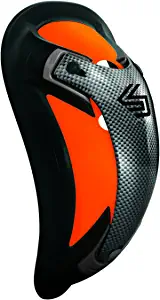Do Soccer Players Wear Cups?
Are you wondering if soccer players wear cups? Great but odd question! And, the short answer is no, soccer players don’t typically wear cups.
There are no rules requiring soccer players to wear protective sports cups so it’s up to the individual athlete.
This is because of the nature of the sport of soccer. Soccer is not a sport where players are likely to experience direct hits to their genitals.
Instead, most of the contact in soccer is focused on the legs, feet, and torso. As a result, players wear shin guards to protect their legs, but not cups to protect ‘you know what’.
Players in some other sports such as baseball wear cups because of the potential line drives that could rocket into their private area.
What is a Cup in Sports?
 A cup is a protective piece of equipment that is worn by male athletes to protect them from injuries to the front groin area.
A cup is a protective piece of equipment that is worn by male athletes to protect them from injuries to the front groin area.
It is more commonly worn in sports such as baseball, hockey, football, and lacrosse.
The cup is typically made of hard plastic and is worn inside a jockstrap or compression shorts. Here’s an example of one: Shock Doctor Ultra Pro Carbon Flex Athletic Cup for Sports
Reasons Why a Soccer Player Might Wear a Cup
While most soccer players don’t wear a cup, there are some exceptions to this rule.
Some soccer players who have experienced injuries in the past may choose to wear a cup for added protection.
Additionally, goalkeepers may choose to wear a cup to protect themselves from shots that may come their way. Keepers may opt to wear one just for training sessions when shots are more frequent.
However, these cases are relatively rare and most soccer players do not wear cups.
Should Soccer Players Wear Cups?
I honestly don’t think it’s necessary to wear a cup during soccer training or games.
Yes, it’s painful to get hit by a soccer ball or cleat below the belt but it rarely happens. For this reason, I don’t think you need to wear one.
For soccer players of any age, wearing a cup is bulky and uncomfortable. It will restrict your movement from moving laterally and vertically.
If you require a cup for medical reasons such as surgery then it’s obviously best you wear one.
If you don’t need one, the best thing you can do is continue to play in the moment. Make sure you always know where the ball is and protect yourself by moving out of the way or covering it up with your hand.
So, at the end of the day, let’s not worry about wearing a cup unless there’s a medical reason to do so.

Written By: SoccerNovo
SoccerNovo is an independent youth soccer media brand built to help parents, players, and coaches better understand the game and the pathways available in U.S. soccer. Our mission is to make youth soccer simpler, clearer, and more accessible for everyone involved in it.
Let’s connect


